Estimated reading time: 6 mins
Today, where businesses are investing high on user-experience, front-end development frameworks have come up as the pioneer blocks of the web development world. Be it the most successful companies like – Instagram, Netflix, LinkedIn, etc. or even the smallest of digital start-ups, almost every business today relies on front-end frameworks to craft an engaging web solution.
Over the years, the demand for popular JavaScript frameworks like React and Angular has burgeoned. However, jQuery is still relatable to the present expectations.
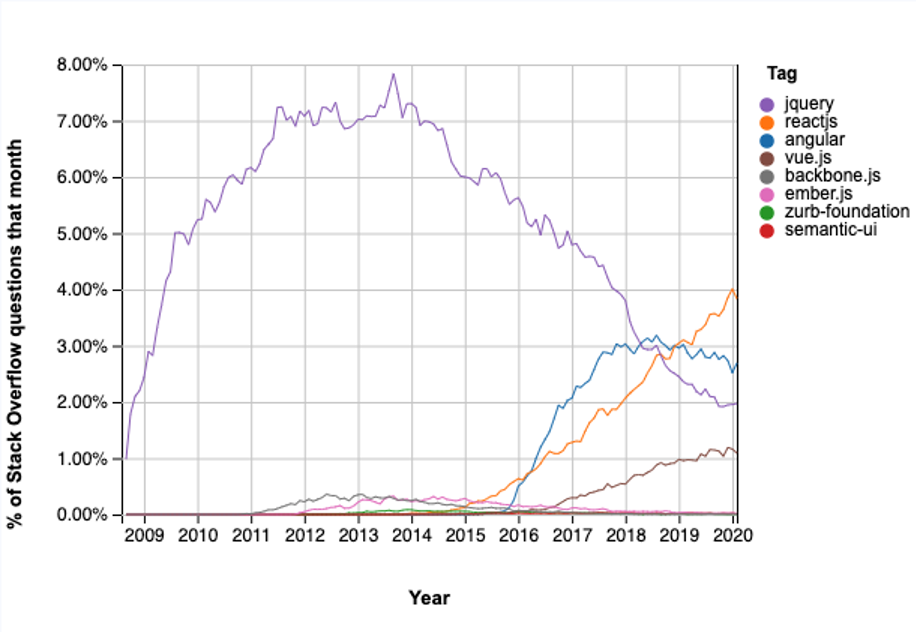
The Challenge
One of the most common challenges businesses come across while employing front-end development is to choose from the various front-end development frameworks available. And one wouldn’t be wrong to say that choosing the right framework is as important as hiring the right front-end developer.
Many businesses find themselves stuck in the soup for choosing the wrong framework. You need to understand your business needs and choose the JavaScript framework that fits the best for you. Let us go step-by-step and understand how the choice of framework can differ according to the project goals and then see the pros and cons of each framework in detail.
Contents of this Guide:
1) The Right Framework According to your Business Goals
2) The Top 5 Front-end Development Frameworks: Pros & Cons
The Right Framework According to your Business Goals
User-experience and functionality are the quintessence of every website, and a framework should help you excel at these entities in the easiest possible way. When you hire a front-end developer you screen his/her expertise based on the project scope, same goes for the framework you choose.
Let’s consider different project goals and see which framework works the best for us.
Enterprise-grade Projects
Enterprise projects serve to a large volume of users and are expected to deliver high performance. These web projects suitably employ best practices and focus on functionality. The frameworks and technology used for these projects needs to be reliable and reusable. The recommended frameworks for these type of projects are Angular.JS and React.JS.
Angular for Enterprise-grade Projects:
The framework is developed by Google and has a rigid code structure with ready-to-implement solutions for most of the common functionality-related issues. Some key features:
- Popularization of TypeScript that offers rich toolkit for enterprise development
- Huge and strong community
- Easily findable ‘best practices’ for each element
React for Enterprise-grade Projects:
React is developed by Facebook and scores high on flexibility of development. The framework allows front-end developers to make experiments readily. Some key features:
- Multiple ways to organise an application
- ReactJS is more of a huge library of resources
- Suitable to speed-up for large projects


E-commerce Marketplaces
E-commerce marketplaces are on a rise in the present times. These projects aren’t as complex as the enterprise-grade software. However, there are some nuances that need to be understood. The recommended technology to build great e-commerce marketplaces would be the ready-to-build CMS (Content management systems) like WordPress, WooCommerce, and Magento. While the framework that best suits your need is Vue.JS or jQuery.
Vue.JS for E-commerce Projects
Vue.JS is a new JavaScript framework as compared to Angular and ReactJS and has gained good popularity lately. Some key features of Vue.JS:
- Fast and flexible framework
- Efficient library
- Suitable for both small and big projects
JQuery for E-commerce Projects
JQuery is one of the most popular JavaScript library that is cross-browser compatible. The widely-used framework has many advantages including:
- Fits best for small projects to be executed in a short time
- Short codes that reduce the development time
- Reduced probability of coding errors
MVP and Landing Pages
When you wish to experiment your business ideas using MVP (minimum viable project) or create a landing page, your aim is to create good user-experience in the minimum possible time. Here Vue.JS and jQuery frameworks can help you build appealing apps with basic functionalities in less time. Heavy applications like React.JS and Angular.JS aren’t recommended for such projects.
The Top 5 Front-end Development Frameworks
We have read how the suitable front-end framework may vary with the varying project goals, but it would be too soon to conclude on the most appropriate framework for your business. Therefore, here we will discuss each front-end framework in detail to make an informed choice.
The State of JavaScript 2019 concludes that Angular.JS, React.JS and Vue.JS are the most widely used and top front-end development frameworks. However, there are some limitations with each framework which you should know.
- Angular.JS Framework
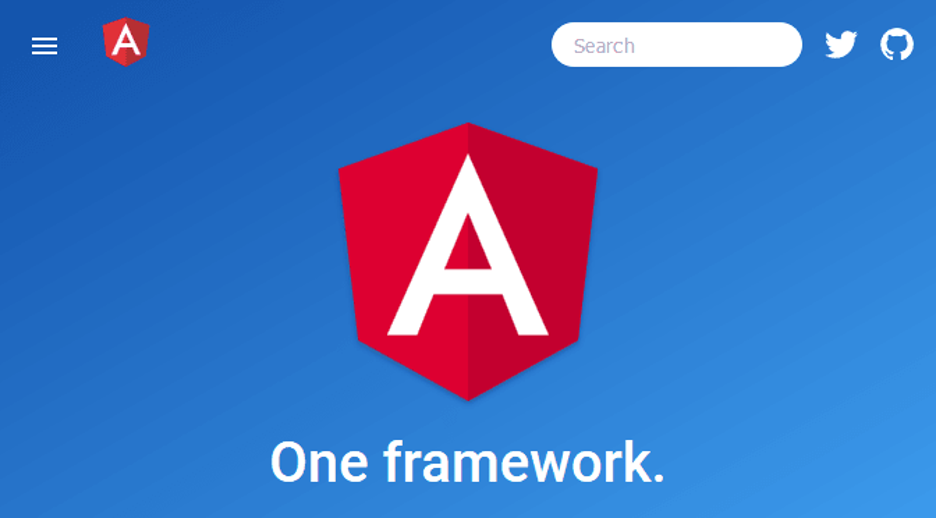

Angular framework was launched by Google in 2016 and this framework is based on TypeScript. Majority of businesses today prefer to hire front-end developers who have good expertise over the Angular framework owing to its two-way binding feature. This offers real-time synchronization between the model and the view, thus reducing the chance of mistakes and speeding-up the development. BMW, Forbes, and Xbox are some brands utilizing Angular.JS for its applications.
Pros:
- Reduced code length with inbuilt two-way binding feature
- Components can be decoupled from dependencies by defining them as external elements
- Dependency injection allows reuse of components
- Strong community to find best practices and resolve doubts
- Best for building mobile or web apps
Cons:
- Hard to learn as compared to React.JS framework
- Innumerable documentation can be confusing
- React.JS Framework
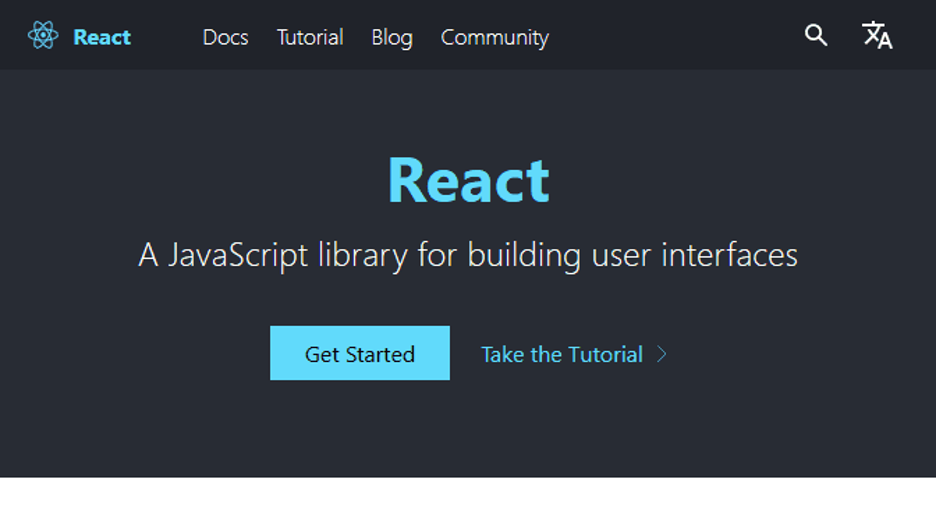

React.JS is a popular framework backed by Facebook. It was developed to resolve the fix code maintainability issue. It is regarded as the simplest front-end framework and is popular for its virtual Document Object Model (DOM). The popular framework is recommended for making high performance web solutions and PWAs (Progressive web applications).
Pros:
- Use of virtual DOM allows consistent performance
- Allows reusability of components in other parts of the application as well
- React dev tools are advanced
Cons:
- Constant updates in the framework makes documentation harder and learning a little harder
- Beginners can find the JSX complex
- Only fit for front-end solutions
- Vue.js Framework
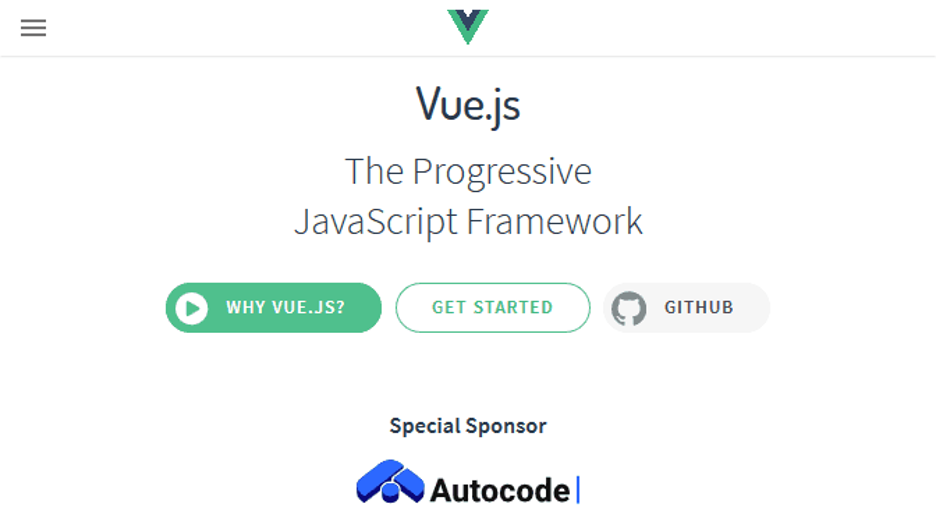

Vue.js is gaining popularity lately for its straightforward programming approach. It eliminates the complexities of Angular.js and is smaller in size. The framework offers visual DOM and 2-way binding. It is a component-based framework and fits best for both mobile apps and progressive web applications. Brands like Alibaba, Xiaomi and 9gag employ it for their applications.
Pros:
- TypeScript support same as Angular.js
- Simple syntax and easy to learn for beginners with JavaScript knowledge
- Flexibility to custom design the applications structure
Cons:
- Components are not stable
- Community is relatively smaller
- Most plugins are in Chinese language
- JQuery Framework
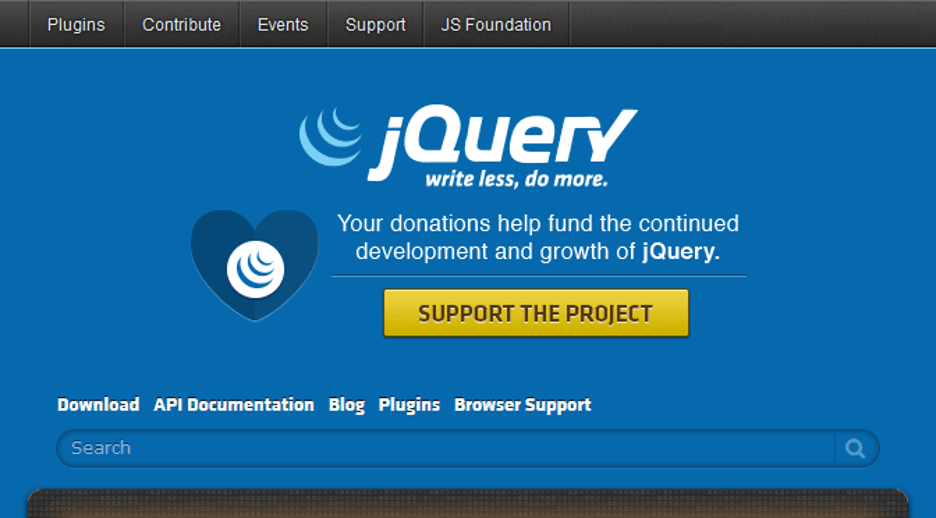

The JQuery framework was introduced in 2006 and ever since then it has been one of the most widely-used frameworks. JQuery is still relevant and helps developers to minimize the coding efforts by eliminating the need for writing extensive JavaScript codes. This is the most browser-friendly framework and allows developers to manipulate DOM and CSS for optimizing the functionality.
JQuery Mobile is a HTML5-based UI system that also allows front-end developers to make native mobile apps.
Pros:
- Flexible DOM for managing elements
- Facilitates dynamic content
- Eliminates extensive JavaScript coding
- Suitable for small applications
Cons:
- Comparatively advanced front-end frameworks are available
- Slower working capacity then the alternatives
- Ember.js
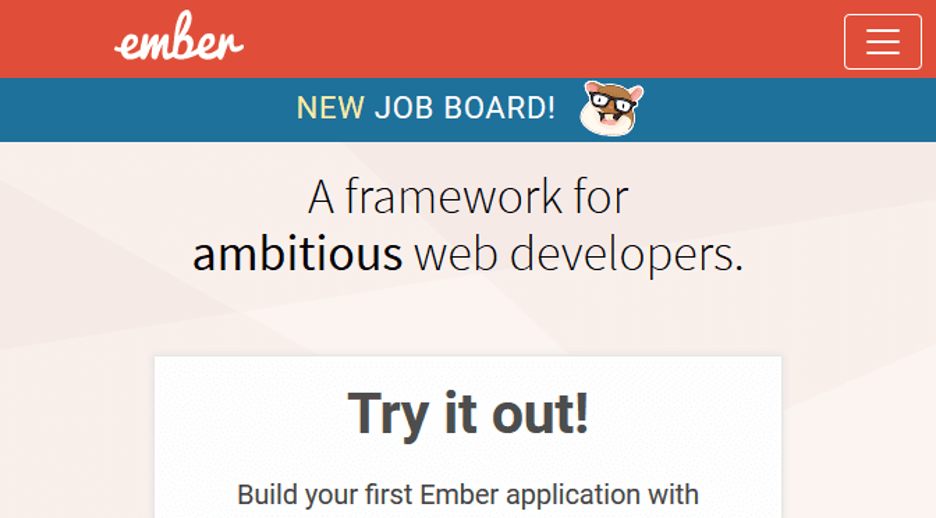

It was launched in 2011, to help developers build complex web and mobile apps seamlessly. The framework is component-based and offers the benefits of two-way binding. If you wish to build a feature-rich enterprise-grade application it would be recommended to hire a front-end developer with Ember.js background.
However, the framework is not explored much as it has a hard learning curve due to its rigid structure.
Pros:
- Two-way binding
- Fastest framework
- Organised Documentation
- Efficient architecture
Cons:
- Slow updates
- Small community
- Hard learning curve
- Not suitable for small applications
Summing Up
Above are the top 5 recommended front-end frameworks that can help you build from the simplest to the most complex of applications with ease. However, the choice of a framework completely depends on your business needs and your project goals. Some other factors to consider before you finalize on a front-end development framework include – popularity, web optimization, usability, and core features.
